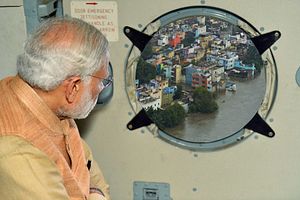Last week, Vikram Hegde, co-founder and editor of the website Postcard News, was arrested for spreading “fake news” about Muslim youth attacking a Jain monk in India. His website has been found to be a right-wing propaganda machine.
Earlier this week, India’s information and broadcasting ministry announced new guidelines that would essentially punish journalists for publishing fake news. According to the proposal, the media accreditation of a journalist, provided by the central government’s Press Information Bureau (PIB), could be suspended upon any complaint against a print or television journalist.
The editor of a fairly young news website, The Wire, wrote that this proposal would “place media organisations at the mercy of trolls, bureaucrats, and politicians and strengthen the already visible trend of self-censorship when it comes to politically sensitive stories.”
The PIB accreditation gives journalists easy access to government offices and events. The guidelines said that complaints against print journalists would be examined by the Press Council of India (PCI), while the News Broadcasting Standards Authority (NBSA) would look into complaints against television reporters.
However, the PCI comprises government and industry members, and gets its funding from the government. Most of the news channels in India have refused to recognize the NBSA. Currently, journalists working for digital media are not eligible for accreditation under the ministry’s existing guidelines, since websites don’t need a registration or a license: newspapers and TV stations, on the other hand, need such a license.
The exemption of journalists in the media presents an interesting dynamic: some of the best work in journalism in India in recent years has been produced by digital media, while at the same time, there is the mass production of fake news peddled by Hindutva-oriented websites, which are often circulated by WhatsApp.
But will the armies of trolls also be booked? And would the government and its ministers accept its own misdemeanors in this space? One BJP minister, who defended the arrest of the Postcard News editor, is a member of PCI. In 2015, PIB had published a photo of Prime Minister Narendra Modi surveying the floods in Chennai from an airplane. However, that was a doctored photo. So, what is the government’s own definition of fake news?
Less than 24 hours since the guidelines were announced, Modi intervened and overturned the guidelines. Instead, a committee was constituted to frame rules for and regulate news websites – a committee without a single representative from news websites.
With freedom of the press in India shrinking considerably and anyone questioning the might of the current BJP-ruled establishment meeting deadly consequences, the new guidelines led to an uproar among Indian journalists, as they wondered aloud if only select journalists would be targeted. It’s another matter that getting the PIB accreditation is in itself a process that thrives on nepotism. India slipped three places last year to rank 136th among 180 countries rated in the World Press Freedom Index from Reporters Without Borders.
Section 66(A) of the existing Information Technology Act has been exercised with a strong hand, leading to the arrests of several people. It prohibits the sending of information of a “grossly offensive” or “menacing” nature through computers and communication devices and has been used by several states to arrest people over posts on social media that officials claimed “seditious,” “communally sensitive,” or abusive.
But how would the government regulate the unhindered uploading of information — let’s say video — on platforms like YouTube and WhatsApp, given the assumed democratic nature of the internet? And yet at the same time, the menace of fake news — whose intensity was realized when a mob attacked and killed seven people last year — cannot be ignored.
And that’s where the trust deficit in the media comes in. For one, the reader’s editor at The Hindu recently wrote that he has “stopped using the term ‘fake news’ as it legitimizes outright lies and manufactured hatred. Lies, propaganda, and partial truths cannot be linked with the word ‘news’.” And overturning the paradigm of what is termed news would require a ecosystem of journalism where ethics are back in the game, and wherein self-regulatory bodies are acknowledged are taken seriously by the news media. That would mean reigning in news channels like Republic TV and India Today that were the top contenders in 2017 for dishing out the maximum number of fake news pieces.
While on one hand the Indian government aims to digitally connect 239,000 village units by 2020, the PIB is also working toward tracking the movements of journalists in government offices by replacing their accreditation cards with radio-frequency identification-enabled (RFID) cards.
Last week’s bedlam with the proposed clampdown was well suited to a government that has been playing divisive politics: it divided journalists along the lines of determining who is a real journalist and who isn’t, purely on the basis of accreditation. The larger issue of press freedom was lost amid the cacophony of accreditation being lost and questioning the reputation of journalists who haven’t received one.
The policing of the internet goes against the democratic space that the medium provides. Clearly, it is this process of amplifying hitherto silenced voices that the Indian establishment fears.
Disclosure: I neither have accreditation nor a press card as a freelance journalist. In spite of being an award-winning journalist for 12 years, I am unable to apply for PIB accreditation because its requirement is a minimum of 15 years of experience.

































